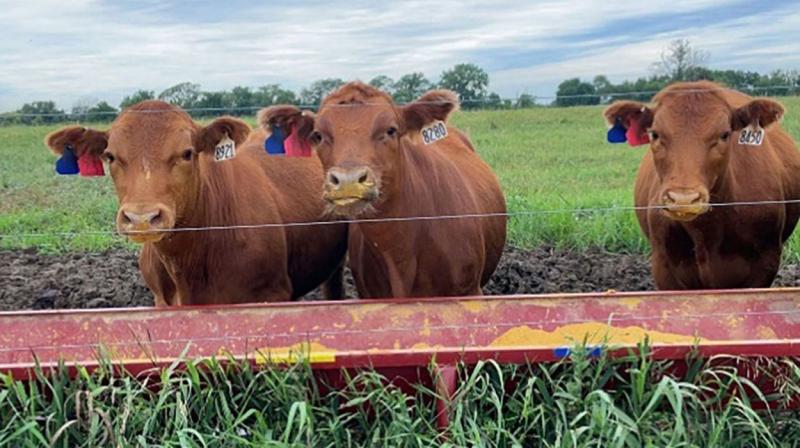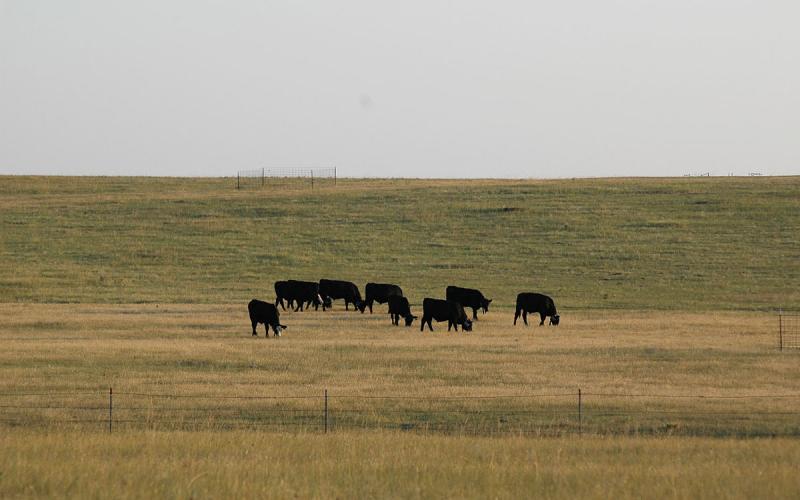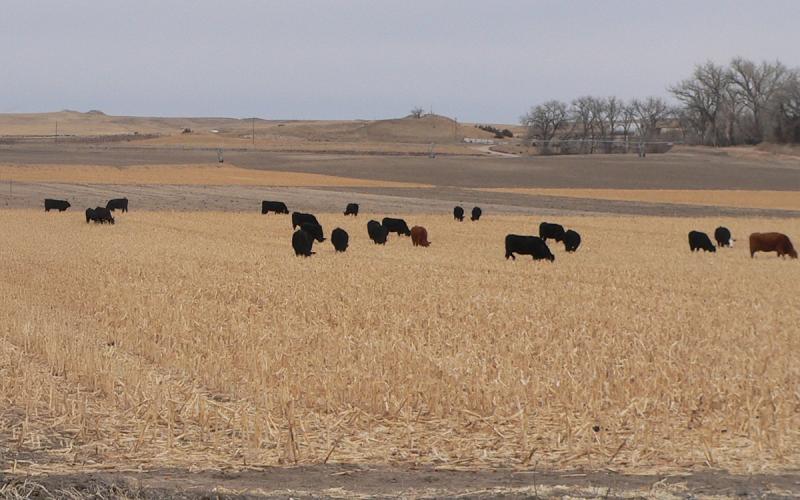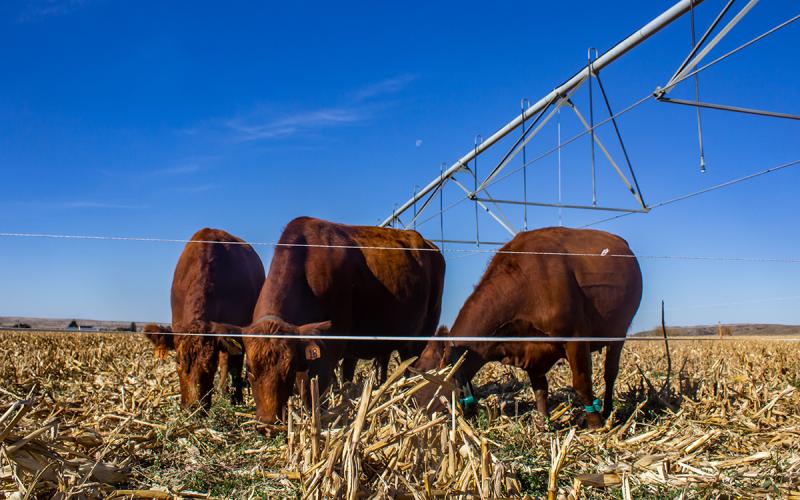Written by Sydney Vanderhoff, former SDSU Extension Beef Nutrition Field Specialist.
Throughout the grazing season, it is commonly known that forage quality is declining as the grass matures. As the available forage quality decreases, animal gains can also decrease. Providing supplemental protein, such as dry distillers grains plus solubles (abbreviated as DDGS) can increase animal gain to meet the desired performance. Two recent studies at the University of Nebraska-Lincoln demonstrate two different ways producers can approach distillers grain supplementation.
Strategies for Supplementation Frequency of Grazing Yearling Steers1
Supplementing calves on pasture requires labor, which means added cost. This led to a question of: does the frequency of supplementation effect performance? Steers rotationally grazed smooth bromegrass pastures from May to August and were either supplemented DDGS daily, 3 times a week, or no supplementation being provided. Providing distillers grains supplement increased gain by 0.89 pounds/day (abbreviated as lb./d) compared to cattle that received no supplement.
|
|
|
|
|
|---|---|---|---|
| Initial BW, lb. |
|
|
|
| Ending BW, lb. |
|
|
|
| ADG, lb. |
|
|
|
Source: Vanderhoff, S. T., R. L. Sjostrand, M. M. Norman, I. F. Vicci, J. C. MacDonald, M. E. Drewnoski. 2024.
Strategic Supplementation During the Grazing Season2
Strategically supplementing could provide opportunities for producers to increase performance and profitability of yearlings grazing cool-season grasses in the summer. Strategic supplementation is supplementing only late in the grazing season. In this experiment, full supplementation was 112 days and strategic was 60 days (54% of the grazing season). With strategic supplementation, producers would feed less overall and save money on feed and labor compared to supplementing over the whole grazing season. Non-supplemented yearlings had an average daily gain (abbreviated as ADG) of 1.51 lb./d, and providing supplement increased ADG by 0.5 lb./d. Cattle supplemented during the latter part of the grazing season had similar performance to those supplemented the entire season.
|
|
|
|
|
|---|---|---|---|
| Initial BW, lb. |
|
|
|
| Ending BW, lb. |
|
|
|
| ADG, lb. |
|
|
|
Source: Wheeler K., D. Dustin, J. Parsons, M. Drewnoski, K. Wilke. 2023.
Key Points

Providing a high-protein supplement to yearlings during the grazing season may increase final body weights and average daily gain compared to not providing supplement. The frequency of supplementation comes down to economic and logistical viability on the cost and availability of labor required to provide the supplement. Proper grazing management is still needed to match cattle nutrient requirements with pastures of appropriate forage availability.
References
- Vanderhoff, S. T., R. L. Sjostrand, M. M. Norman, I. F. Vicci, J. C. MacDonald, M. E. Drewnoski. 2024. Strategies for DDGS Supplementation Frequency of Grazing Yearling Steers. Nebraska Beef Report. 35-36
- Wheeler K., D. Dustin, J. Parsons, M. Drewnoski, K. Wilke. 2023. Effects of Strategic Supplementation on Return to Management and Performance of Yearling Cattle. Nebraska Beef Report. 26-28


